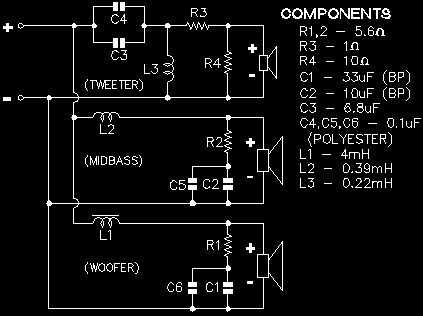![]()
construction:building the etude transmission line speaker
|
|
 |
Building the box The enclosure was constructed of 18mm MDF. The front baffle is double thickness. The front baffle width is 230mm. The internal dimension of the front baffle is 194mm.The rear TL opening is 150 x 90mm. The rear opening or vent is reinforced primarily for aesthetic reasons - from behind it gives the speaker a more solid appearance as if the entire enclosure were made from 36mm thick walls. The internal baffle was reinforced at the bottom. An access panel is provided at the bottom. This allows access to the crossover which is mounted on MDF which can be mounted to the rear side of the angled internal baffle. The terminal block (not shown) is adjacent to the crossover. The front half of the line is stuffed with acoustic damping material such as dacron or fibre fill. The base is hardwood and was needed due to the curves. Please note: Detailed plans are NOT available. The above information when combined with the dimensioned section drawing on the left is all you need to know to build the box. After constructing a rectangular box, I decided I wanted curves. They were achieved by adding 12mm MDF to the top and sides, then manually planing until I achieved the desired curve. This is a very time consuming process and I don't recommend it. There are better ways to get a curved box. A single rectangular box following this design is 20 kg fully constructed. Due the the extra MDF and curves, mine weighs 33 kg.
|
 |
Crossover This is a second order Linkwitz-Riley 2.5 way crossover. Woofer 2 crosses to the tweeter while woofer 1 is rolled off above 200 Hz with a first order low pass filter, effectively providing baffle step compensation. The tweeter uses a 0.22mH inductor and a 6.8uF capacitor to cross over at 3.5 kHz. Woofer 2 has a second order lowpass filter at 3 kHz. R1,R2, C1 and C2 provide impedance equalisation so that the woofer appears to the inductor as if it were a resistor. Capacitors C6 & C7 are provided to improve the power factor of the bipolar electrolytic capacitors. Overdrive protection from polyswitches has been removed as I didn't consider them necessary. The components shown coloured are those which provide the first order low pass filter to Woofer 1. Comments on the crossover
An Lpad has been added to the original crossover. Initially the sound is detailed, but with extended listening, and especially at high SPL levels, they can become a little fatiguing. Also I find that many recordings, especially of pop music, have an irritating treble content in vocals that is unnatural. With some padding, this can be improved slightly, although if the recording is poor, there isn't much you can do without destroying the good recordingds. Feedback If you have any further questions, I may be contacted by email. Please also let me know if you are building this speaker as it is rewarding for me to know what others have done with this information.
|